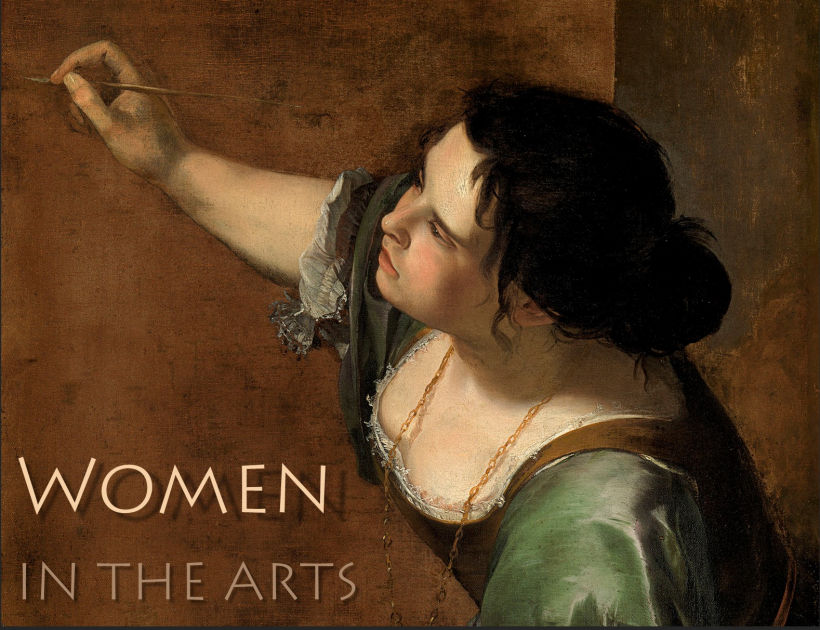Here are brief bios of the composers and choreographers considered in the class, listed in order of birth—but note
that the list does not include singers or dancers who were not also creators of independent works. All the
biographies of women featured in the course are collected in the BIOS link
on the syllabus page.
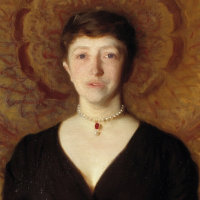 |
Isabella Stewart Gardner, 1840–1924. American patron.
A year-long trip to Europe to recover from a miscarriage in 1866 both restored Isabella's health and sparked her life-long interest in collecting. After the death of her wealthy Boston husband Jack Gardner in 1898, she commissioned a house in the style of a Venetian palazzo to house her collection, which now included numerous European masterpieces, objets d'art of all kinds, and many works by her friend John Singer Sargent. This house is now a museum.
|
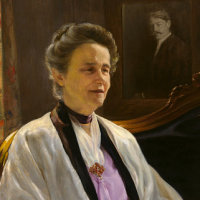 |
Marian MacDowell, 1857–1956. American pianist and patron.
A pianist and an acclaimed performer of the music of her husband Edward MacDowell, Marian bought a farm in New Hampshire as a retreat for him. After his death in 1908, she secured his legacy by inviting artists of all disciplines for extended creative residencies, a project that has hosted over 8,000 MacDowell Fellows in the century or more since its inception.
|
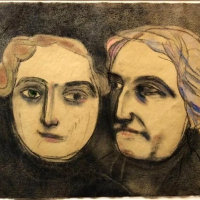 |
Claribel Cone, 1864–1929. American collector.
Dr. Claribel Cone and her pianist sister Etta (1870–1949), were among the great patrons of Modernist French art in the earlier 20th century. They bequeathed the contents of their apartment to the Baltimore Museum of Art, making it one of the greatest collections of Matisse in the world, plus choice works by numerous other artists. The posthumous double portrait is by RB Kitaj.
|
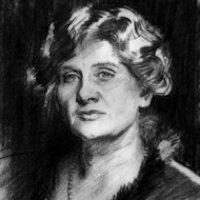 |
Elizabeth Sprague Coolidge, 1864–1953. American composer and patron.
A pianist and lover of chamber music, Coolidge used family money to sponsor four players from the Chicago Symphony to form the Berkshire String Quartet, a project that eventually morphed into the Tanglewood Festival. She built the Coolidge Auditorium at the Library of Congress, and commissioned works from composers such as Barber, Bartok, Britten, and Aaron Copland's Appalachian Spring,
|
 |
Henri Matisse, 1869–1954. French painter and sculptor.
Matisse and Picasso stand as the giant pillars of French art in the first half of the 20th century. Matisse was the slower starter and the less versatile, but he stands alone for the richness of his color and the sensuality of his forms, whether in painting or in sculpture. Suffering from crippling arthritis at the end of his life, he produced a completely new oeuvre in colored-paper collage.
|
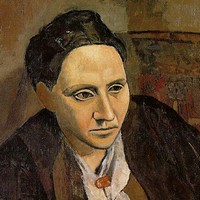 |
Gertrude Stein, 1874–1946. American poet and collector.
Gertrude Stein comes into this course as the American expatriate whose salon in Paris hosted the likes of Hemingway, Fitzgerald, Pound, Matisse, and especially Picasso. But of course she was a Modernist poet in her own right, writing in a terse enigmatic style that is often quoted.
|
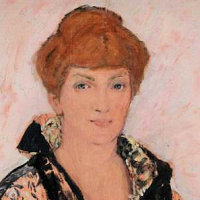 |
Katherine Sophie Dreier, 1877–1952. American painter and patron.
The daughter of wealthy German immigrants, Dreier was able to pursue her own career as a painter and to support the work of others. The Société Anonyme, which she founded in 1920 with Man Ray and Marcel Duchamp, was the first permanent collection of modern art in the United States (although later eclipsed by MoMA).
|
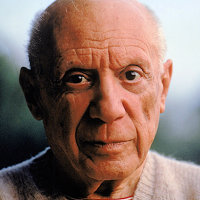 |
Pablo Ruiz Picasso, 1881–1973. Spanish painter, printmaker, and sculptor.
Picasso's invention of Cubism around 1910 (with Georges Braque) made him arguably the most important figure in 20th-century art. However, his entire career from precocious youth to energetic old age was distinguished by rapid changes of style, constant experimentation with new media, and a gift for finding the exact image to capture an historical moment, as in his Guernica of 1937.
|
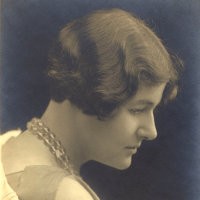 |
Rebecca Clarke, 1886–1979. British American composer.
A professional violist and noted composer of chamber music, Clarke was born in England of an American father and German mother; she studied in London, but her career took her also to America, where she was supported in part by Elizabeth Sprague Coolidge. Morpheus, her first work to be performed in the US, was submitted under a male pseudonymn; it was praised while pieces under her own name were not.
|
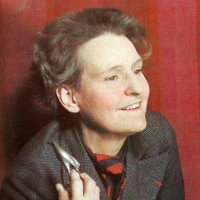 |
Sylvia Beach, 1887–1962. American bookseller and publisher.
Born in Baltimore, Beach moved with her family to Paris at age 11 when her father took the pulpit at the American Church. She returned there in 1918 to study French literature, but soon opened an English-language bookshop, Shakespeare and Company, which became a Mecca for expatriate writers, including James Joyce, whose Ulysses she published after it had been rejected elsewhere.
|
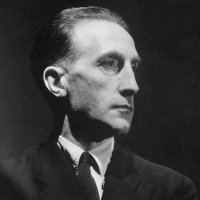 |
Marcel Duchamp, 1887–1968. French American artist.
Duchamp sprang to notoriety with his Nude Descending a Staircase #2 at the 1913 Armory Show in New York. He remained mostly in this country, producing relatively little, but fertilizing the art world with his original and often provocative ideas. He was, with Man Ray and Katherine Dreier, the co-founder of the Société Anonyme, the first modern art museum in America. Most of his works are in the Philadelphia Museum of Art.
|
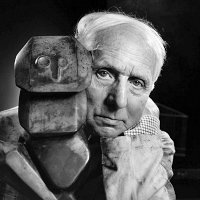 |
Max Ernst, 1891–1976. German/American/French artist.
Ernst worked in virtually every medium—paint, printmaking, collage, and sculpture—but always with that original imagination which made him one of the giants of the Surrealist movement. German by birth, he moved to Paris, then to New York, becoming and American citizen, then back to Paris to become a French citizen in 1958. Peggy Guggenheim was his third wife (out of four).
|
 |
Martha Graham, 1894–1991. American choreographer.
Graham technique is at the root of much modern dance, even today. In her 70-year career, she collaborated with major composers and designers to create over 180 works, ranging from the iconic Americanism of Appalachian Spring (1944) to treatments of mythological subjects, such as the Medea story in Cave of the Heart (1948).
|
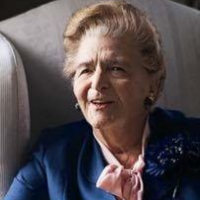 |
Catherine Filene Shouse, 1896–1994. American patron.
Even as an undergraduate at Wheaton, Catherine Filene was an activist to gain employment opportunities for women. This took her to a post in the Department of Labor, then to a series of presidential appointments. She used her connections to make Wolf Trap, her farm outside Washington, first a venue for the coming-together of artists and politicians, and then as a National Park for the Performing Arts, with a large variety of performance and educational activities.
|
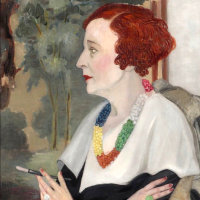 |
Peggy Guggenheim, 1898–1979. American gallerist and collector.
For most of her life, Peggy Guggenheim mixed with avant garde artists and writers, collecting their work and advancing their careers though her Art of This Century gallery. She moved in the 1950s to Venice, where her house on the Grand Canal and its extraordinary collection is one of the most-visited attractions in the city.
|
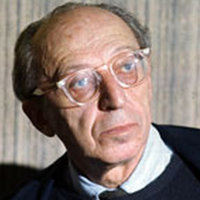 |
Aaron Copland, 1900–1990. American composer.
Trained in Paris, Copland began writing in the style of the European avant garde, but in his ballet commissions in the 1930s and 1940s, such as Billy the Kid, Rodeo, and Appalachian Spring, he developed the open folk-inflected style that has become, for many people, the sound of American music.
|
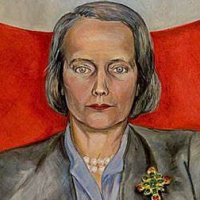 |
Betty Parsons, 1900–82. American gallerist and artist.
When she divorced her well-connected husband in order to continue studying painting and sculpture in France, her wealthy family disinherited her. Returning to New York in 1933, she had some success as an artist, but took a job in a gallery to make ends meet. So successful was she at this, that she developed a list of clients that made the Betty Parsons Gallery the beating heart of Abstract Expressionism in the fifties and sixties.
|
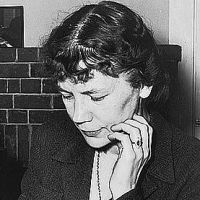 |
Louise Talma, 1906–96. American composer.
Talma's mother was an American singer working in France, where she was born. Although she grew up mainly in America, she returned regularly to France, and took up a sumer position there in the interwar years. She then became a respected professor at Hunter College and the winner of numerous awards, including two Guggenheim Fellowships and a total of 41 residencies at the MacDowell Colony.
|
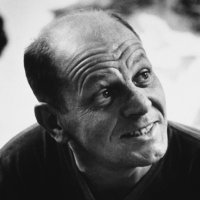 |
Jackson Pollock, 1912–56. American painter.
For many people, Jackson Pollock's "drip paintings," created by pouring paint directly onto raw canvas attached to the studio floor, are the defining image of Abstract Expressionism, and certainly the source of the alternative description, "Action Painting." But Pollock, who was born in Wyoming, studied with Thomas Hart Benton, and worked in the WPA project of the 1930s, reached this style only through a long process of moving through a kind of semi-abstract surrealism.
|
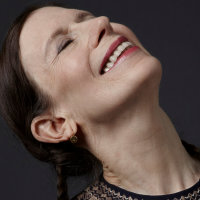 |
Meredith Monk, 1942– . American composer and choreographer.
Monk was born in Peru, where her mother, a pop singer, was on tour. Her creative career has been remarkable eclectic, including singing, composition, choreography, film directing, and just about any endeavor that breaks the boundaries between the classical and popular, and the perceived distinctions between genres.
|
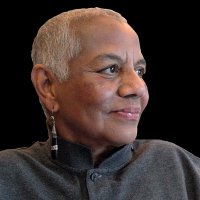 |
Peggy Cooper Cafritz, 1947–2018. American patron.
Peggy Cooper, the daughter of a wealthy African American businessman in Mobile, came to George Washington to study, and almost immediately became an activist for Black causes, especially in the arts. Using the social and political skills she had developed, along with considerable determination and charisma, she co-founded the Duke Ellington School for the Arts, one of the premier launching pads for performers of color in the country.
|






























